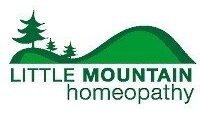Homeopathy can be used instead of surgery or after surgery, in order to prevent cataracts from recurring. Note that homeopathic treatment should be used in conjunction with and not instead of regular medical treatments. Homeopathic treatment for cataracts works best in the early stages, and works less well in cases that are severe or advanced.
Cineraria Homeopathic Eye Drops
Abstract and Figures
The ocular surface comprises diverse components that collaborate to maintain homeostasis, and any change can be termed an ocular surface disorder. One frequently observed change is the development of corneal ulcers, a primary contributor to visual impairment. Cineraria maritima is a botanical species renowned for its therapeutic application in managing diagnosed cataracts and other eye-related ailments. This study evaluated the effect of the homeopathic eye drops containing Cineraria maritima using cell viability assessments, a scratch experiment, and the quantification of IL-8 levels. The in vitro tests revealed the absence of any cytotoxic effects associated with the eye drops, thus demonstrating their safety for use. Furthermore, these eye drops exhibited the capacity to enhance the percentage of scratch closure. The treated group had an average closed area percentage of 57%, while the control group exhibited only 41% area closure, indicating the potential efficacy of eye drops in managing ocular disorders. Finally, IL-8 levels were measured following the induction of an inflammatory response by LPS and subsequent treatment with the eye drops. The outcomes indicate a decrease in the levels of this cytokine in the treated group. Such findings assure the safety and effectiveness of Cineraria maritima 4CH homeopathic eye drops, suggesting a potential avenue for their application to treat corneal ulcers.
Homeopathic Treatment of Incipient Cataracts

The best review article on the treatment of cataracts is The Homeopathic Treatment of Incipient Senile Cataract, with Tabulated Results of one hundred cases by A. B. Norton, M.D., published in the North American Journal of Homeopathy, 1891.
This was a Retrospective Study looking at the homeopathic treatment of cataracts in 295 Patients. 100 Patients were under treatment for longer than 3 months. Results: Improvement in 58% of cases, no change in 42% , Slight decrease in 26%, Significant decrease 19%. The best indication of success is the level of vision before treatment. Dr. Norton looked at two groups. Vision better than 15/50 the results were as follows: decided increase in 14%, slight increase in 26%, no increase in 60%. With vision worse than 15/50 the results were as follows: decided increase in 29%, slight increase in 26%, no increase in 45%. In summary, the earlier you treat the cataract the better the results.
Abstract
Purpose of review Age-related cataract occurs when crystallin proteins in the lens partially unfold and subsequently aggregate. Physicians and traditional healers alike have been exploring pharmacologic cataract treatment for hundreds of years. Currently, surgery is the only effective treatment. However, there are an abundance of homeopathic and alternative remedies that have been suggested as treatment for cataract. This article reviews the current understanding of cataract development and discusses several homeopathic remedies purported to treat age-related cataract. Additionally, we will present an overview of evidence regarding the development of pharmacologic cataract reversal therapies.
Recent findings
Some homeopathic therapies have been shown to prevent cataract development in experimental models. More studies are required to elucidate the potential medicinal and toxic properties of the various alternative therapies. However, in recent years, scientists have begun to investigate substances that address cataract by reversing lens protein aggregation. One such compound, lanosterol, was reported to reverse cataract opacity in vitro and in animal models. Subsequently, 25-hydroxycholesterol and rosmarinic acid were identified as having similar properties.
Summary
Although challenges and uncertainties remain, further research has the potential to lead to the development of a nonsurgical therapeutic option for age-related cataract.
References
Natural Opthalmics. NatO. Tech. Paper: www.naturaleyedrops.com

